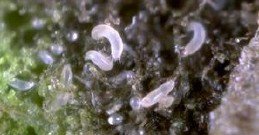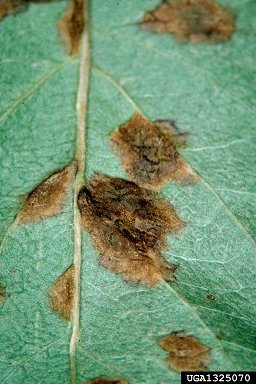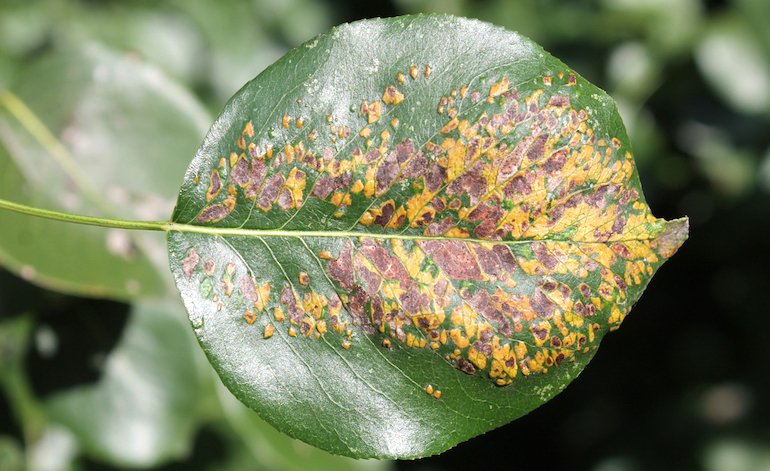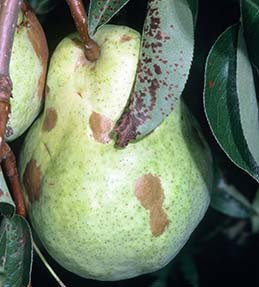Blister mites (Apple leaf and Pear leaf Blister Mites) are tiny, microscopic mites that burrow under the lower surface of the leaves and cause blisters. Apple and pear trees are primary hosts.
For region-specific information, please contact your local Giving Grove partner. If you would like more information like this sent straight to your inbox, consider subscribing to The Serving, The Giving Grove’s quarterly newsletter.
Appearance:
Mites are microscopic, worm-like mites that are pale yellow to pinkish-whitish.
Eggs are oval and translucent or white in color
Damage:
Leaves develop raised “blisters” that start out green in the spring and turn brown by mid-summer
Causes yellowing and early dropping of leaves
Infested buds may become black, dry, and eventually drop to the ground
Mites can feed in the blossoms, causing a reduction in fruit yield
Scarred fruit (mites do not live in the blisters)
Management & Treatment
Blister mites cannot be treated in the spring or summer.
Monitor leaves in mid-spring; examine shoots in the tops of trees with a 10x hand lens.
Large infestations need to be treated in October/November when the trees are dropping their leaves with Neem or other products mentioned below
Pick off infested leaves in early September to help prevent damage in the winter. (During the winter months, the mites feed under the bud scales causing it to dry and fail to develop.
In severe cases, apply a dormant season lime sulfur spray to saturate bud crevices on infested trees.
Utilize neem oil or horticultural oil. Micronized sulfur can be substituted, noting that garlic extracts added to such a spray can help in getting toxic effects into bud tissues where the mites are feeding. Organosulfur compounds in garlic are noted for their ability to deliver nutrients through a membrane.
The most important natural enemies are predaceous mites, such as Phytoseiulus species and western predatory mite. Various predatory insects are also important, especially the spider mite destroyer (a tiny black lady beetle) and sixspotted thrips.
Sources: Michael Phillips, “The Holistic Orchard”, UC-IPM, and Utah State University Extension, and Patrick L. Byers, Horticulture Specialist





